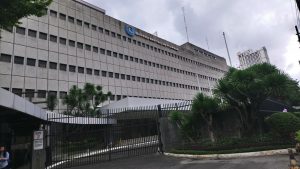




Policy Rate Updates: Double cut finale
 DOWNLOAD
DOWNLOAD

Monthly Economic Update: One for the road
 DOWNLOAD
DOWNLOAD

Inflation Update: Still low, still slow
 DOWNLOAD
DOWNLOAD


BSP unlikely to cut key rate before Fed

The Bangko Sentral ng Pilipinas (BSP) is unlikely to cut rates ahead of the US Federal Reserve due to the country’s wider current account deficit and concerns over still-elevated inflation.
Nomura Global Markets Research said in a note dated July 7 that the Philippines is the least likely to decouple from the Fed among central banks in Asia.
“Unlike the past cycles, when BSP moved ahead of the Fed, we now see BSP as constrained, due to its wider current account deficit,” Nomura said.
Meanwhile, Korea, China, Indonesia and India, are the most likely to cut rates faster than the US central bank as these countries have a greater need and ability to decouple from the Federal Reserve.
The BSP started its tightening cycle in May 2022, hiking borrowing costs by 425 basis points (bps) before pausing last March. This brought its key interest rate to a near 16-year high of 6.25%.
Meanwhile, the Fed raised its target interest rate by 500 bps from March 2022 to May 2023 to 5-5.25%, and is expected to resume its tightening cycle as early as this month after pausing in its June review.
The BSP earlier said further hikes from the Fed could cause excessive volatility in the foreign exchange (FX) market, like what happened in October 2022 when the peso hit a record low of P59 against the dollar as the US central bank became increasingly hawkish.
According to Nomura, during the Fed’s six hiking cycles in previous years and the periods of pause after, around three out of eight Asian central banks began cutting interest rates ahead of the Fed’s first rate cut.
“Aggregating these six episodes, we find that the Philippines’ monetary policy was the most decoupled from the Fed (4 out of 6 episodes), followed by India and Indonesia (3 each),” Nomura said.
“This runs counter to the widely held view that monetary policy in high yielding/current account deficit countries is aligned to the Fed due to foreign exchange concerns,” it added.
The research firm also noted that during the Fed’s pause in the first half of 2019, India and the Philippines began its policy easing to support domestic demand in two to five months ahead of the first rate cut by the US.
This time around, the BSP is expected to start cutting rates only by March next year.
“Newly appointed BSP Governor Eli M. Remolona has pledged policy continuity and is likely to have a similar stance as his predecessor who said it will be ‘dangerous’ for BSP to cut rates ahead of the Fed, raising concerns about significant FX implications,” it said.
Mr. Remolona earlier said the extended pause in tightening gives the Philippine central bank more time to assess the impact of aggressive rate hikes, but the Monetary Board will consider cutting if inflation falls below 4% by October.
“We also expect the current account deficit to remain wide, likely adding to BSP’s caution,” the research firm said.
The country’s current account deficit was at USD 4.3 billion, equivalent to -4.3% of gross domestic product (GDP) in the first quarter, up from USD 4 billion a year ago, data from the BSP showed.
The current account shortfall is projected to reach USD 15.1 billion this year, or -3.4% of GDP.
In a separate research note, Maybank Investment Banking Group said easing inflation across Southeast Asia has given central banks more room to extend their monetary policy pause.
“We are not expecting any more rate hikes from any of the ASEAN central banks for the rest of the year. The monetary policy divergence in ASEAN versus advanced countries will be stark in the second half of 2023,” it said. — K.B. Ta-asan
This article originally appeared on bworldonline.com





 By BusinessWorld
By BusinessWorld